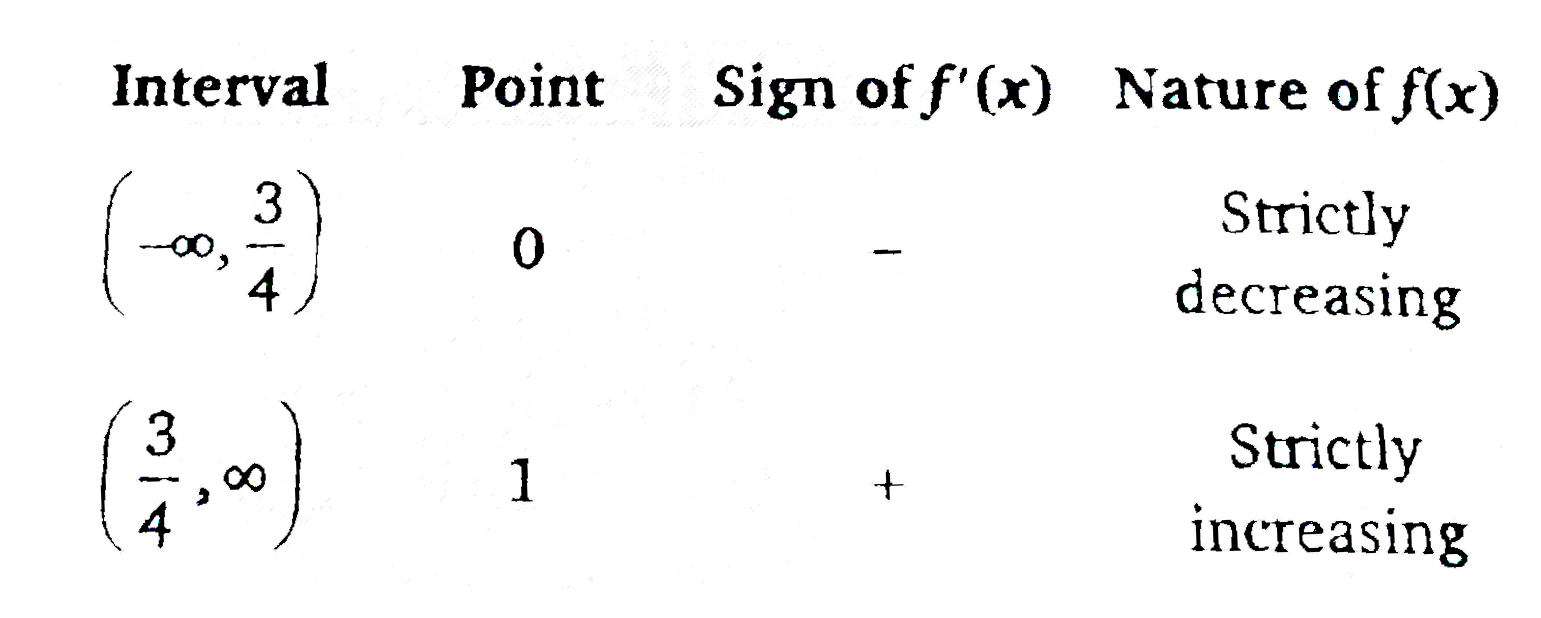Find the intervals in which the function f given by f(x)=2x2−3xis(a) strictly increasing (b) strictly decreasing
f(x)=2x2−3x
⇒f'(x)=4x−3
Let f'(x)=0
⇒4x−3−0⇒x=34


(a) f(x) is strictly increasing in (34,∞)
(b) f(x) is strictly decreasing in (−∞,34)
Topper's Solved these Questions
- BOOK - NAGEEN PRAKASHANCHAPTER - APPLICATIONS OF DERIVATIVESEXERCISE - Exercise 6.327videos
APPLICATIONS OF DERIVATIVES
- BOOK - NAGEEN PRAKASHANCHAPTER - APPLICATIONS OF DERIVATIVESEXERCISE - Exercise 6.49videos
APPLICATIONS OF DERIVATIVES
- BOOK - NAGEEN PRAKASHANCHAPTER - APPLICATIONS OF DERIVATIVESEXERCISE - Exercise 6.118videos
APPLICATIONS OF DERIVATIVES
- BOOK - NAGEEN PRAKASHANCHAPTER - APPLICATIONS OF INTEGRALSEXERCISE - Miscellaneous Exercise19videos
APPLICATIONS OF INTEGRALS
Similar Questions
Knowledge Check
- Question 1 - Select One
The interval in which the function f given by f(x)=xe−x is strictly increasing, is:
A(−∞,∞)B(0,1)C(−∞,1)D(1,∞)
Find the intervals in which the function f given by f(x)=2x3−3x2−36x+7is (a) strictly increasing (b) strictly decreasing
View SolutionFind the intervals in which the function f given by f(x)=4x3−6x2−72x+30is (a) strictly increasing (b) strictly decreasing
View SolutionFind the intervals in which the function f given by f(x)=x2–4x+6 is strictly increasing:
View SolutionFind the intervals on which the function f(x)=10−6x−2x2 is (a) strictly increasing (b) strictly decreasing.
View SolutionFind the intervals in which the fucntion 'f' given by f(x)=x3−3x2+5x+7 is strictly increasing
View SolutionFind the intervals on which the function f(x)=6−9x−x2 is (a) strictly increasing (b) strictly decreasing
View SolutionFind the intervals in which the function f(x)=32x4−4x−45x+51 is (a) strictly increasing. (b) strictly decreasing.
View Solution

